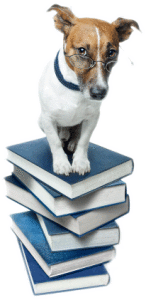I often feel that the hardest part of writing is beginning. Where do I start my story? How will I engage my readers? Last Saturday, I attended Michelle Seaton’s “Effective Beginnings” workshop to see if I could improve my approach to writing beginnings. Michelle imparted a lot of great advice for how to think about written beginnings. The following represents my biggest takeaways from the class.
 Think About Your Reader
Think About Your Reader
The most important information I learned: Writers need to think about how readers want to learn about what they have to say.
This sounds logical, but really, how many of us think this way?
I think like an academic. I find a topic that interests me and know that I have something important to say when I produce an interesting answer to the "so what?" question (so what about this topic is interesting? important?).
On Saturday I realized the ugly truth about my academic way of thinking. At some point I came to believe that people would want to read whatever I write because I have an interesting argument and a Ph.D. (I said it was an ugly truth.)
Graduate school teaches students to think of their arguments first. Journalism school teaches students to think of their readers first.
I will change my mindset. I want to write history for the broadest possible audience and a key part of that is thinking about how my readers want to learn about what I have to say. I truly believe that this mindset is why history enthusiasts read a lot of bad, journalistic histories. Successful journalists-turned-historians cater to their readers’ desires from beginning to end.
The Elements You Need to Write Effective Beginnings
First Page: 3 Ways to Draw Readers In
What is the best way to draw a reader into a story?
Your first page should contain:
 1. An intriguing first line that suggests drama. All readers, and editors, want to see the essence of a good story early on.
1. An intriguing first line that suggests drama. All readers, and editors, want to see the essence of a good story early on.
2. A lede paragraph that sets a scene, poses a narrative conundrum, or delivers readers to a new world.
3. A bridge graph or nut graph: the paragraph or line that tells readers what is at stake for the narrator. Why must the narrator tell this story? Why are they the one to tell it? Why now?
3 Types of Lede Paragraphs
1. Scene-setter: paragraphs that draw readers in by placing them in a scene. For an example see Gay Talese’s “Frank Sinatra Has a Cold."
2. Anecdotal: Anecdotes provide a short, interesting account of something that has happened over and over again. They show personality by providing an example of the subject’s mindset or individuality. See the first paragraph of Sari M. Boren’s “Escape."
3. Narrative: A narrative opener allows the narrator to show his or her personality. The opening sentence should be an idea that the narrator has about the world. See Adam Gopnik’s opening paragraph in “Bumping into Mr. Ravioli.”
First Line
First sentences should be simple and clean. They should suggest the drama of the story.
Other Wisdom for Thought
- Beginnings should provide readers with a sense of how the story ends. Readers want to know what they will gain from reading.
- Writers need to be aware of what their sentences are doing or not doing.
- First drafts don't have perfect beginnings. Writers craft them when they edit later drafts.
Conclusions
I had hoped to leave the class with a clear-cut formula to writing effective beginnings, but unfortunately no shortcuts exist. Writing great beginnings is an innate skill acquired through practice. Regardless, Michelle supplied me with the elements I need to write effective beginnings and with a new way to think about writing. From this point forward I will think about my argument and my readers. I will consider how readers want to learn about what I have to say. This approach will take time to develop but it will be well worth my effort.
Do you have a trick or tip that you use to write effective beginnings? Please share them in the comments.